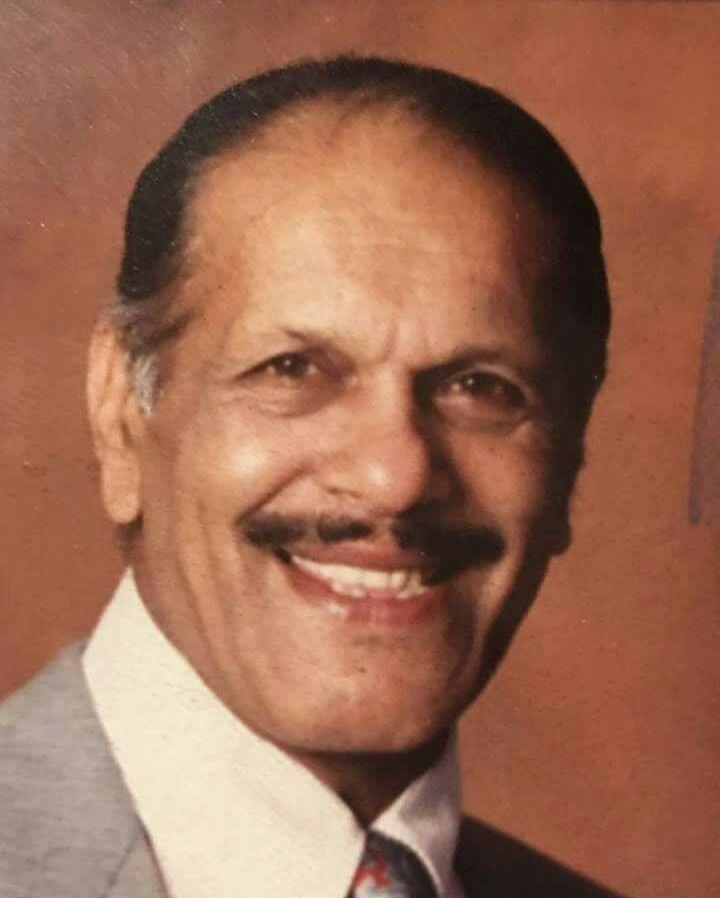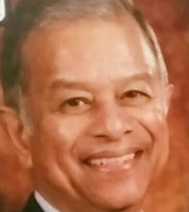There is no greater sight in field hockey than seeing a player thunder down at full speed and cannon the ball to the back of the net with awesome power.
With the constant roar of the crowd chanting “Alu, Alu, Alu” the great Aloysius Mendonca would ignite Nairobi’s City Park Stadium with his exhilarating pace on the left wing. The exclamation point was the ball finding the top of the net past bewildered goalkeepers. Just ask the best goalkeepers at the time -- India’s Deshmathu and Abdul Rashid of Pakistan -- and the others who faced him when he played for the Railway Goan Institute and in Kenya’s colours.
 This star, who was known to the fans only by his first name -- just like those Brazilian soccer maestros Pele, Tostao, Rivelino, Ronaldo and Neymar -- died peacefully at the Nairobi Hospital on Friday, March 10, 2017, at the age of 85. Alu’s death comes two years after the dashing centre forward and his international teammate Egbert Fernandes died in Canberra in November 2014. He leaves behind his brother Pius, sisters Anne (D’Sa) and Teresa (Mandriks), a former Kenya international, children Derek (Rosalynn), Erika (Mendonca-DeSilva) and Cora Lisa (Baretto) and five grandchildren. He was predeceased by his wife Alba.
This star, who was known to the fans only by his first name -- just like those Brazilian soccer maestros Pele, Tostao, Rivelino, Ronaldo and Neymar -- died peacefully at the Nairobi Hospital on Friday, March 10, 2017, at the age of 85. Alu’s death comes two years after the dashing centre forward and his international teammate Egbert Fernandes died in Canberra in November 2014. He leaves behind his brother Pius, sisters Anne (D’Sa) and Teresa (Mandriks), a former Kenya international, children Derek (Rosalynn), Erika (Mendonca-DeSilva) and Cora Lisa (Baretto) and five grandchildren. He was predeceased by his wife Alba.
Alu was one of a kind. I was fortunate enough to line up with this multi-talented star for the Railway Goan Institute for several years and many a time stood still in awe watching this phenomenon perform his magic on a star-studded team that included Silu Fernandes, Hilary Fernandes, Leo Fernandes and Reynold de Souza. In 1976, Alu and I were together again when I managed the Kenya national team for the Rene Frank International tournament in Madras. I got an insight into his coaching methods as he was the national coach and was ably assisted by the late Hardev Singh Kular. Under Alu’s guidance, the young team posted a creditable fifth-place finish. Apart from his national duties Alu also enjoyed success coaching the Railway Goan Institute women, one of Nairobi’s top women’s teams.
Mendonca was born in Anjuna, on January 5, 1933 and, on arriving in Kenya with his family, he joined Dr. Ribeiro’s Goan School, the famed school in Nairobi that was a conveyer belt for producing world-class hockey players under the tutorship of coach-extraordinaire Anthony de Souza.
It was here that the talent of this exceptional athlete was recognised and he was picked to represent the Schools Combined XI against touring All India in 1948-1949. This was the match that launched the illustrious career of the greatest left winger of his era as he went on to represent his country at four Olympic Games. His first appearance came in 1956 when the country made its Olympics debut in Melbourne and it was a proud moment for all Goans as Mendonca’s teammate, the late Anthony Vaz, was given the unique honour of being the flag bearer.
Four years later in 1960, Mendonca captained his country in Rome and he ended his career following the Olympics in Tokyo in 1964 where the squad posted its best-ever showing and earned an Olympic certificate.
Mendonca was later appointed national coach and that meant two more Olympic visits to Munich in 1972 and Montreal four years later. His six Olympic appearances were a rare feat matched only by his close friend and international teammate fullback and captain Avtar Singh Sohal.
Alu’s flair was not only confined to hockey. He also happened to be a first-class sprinter and opened the bowling for the Railway Goan Institute cricket team. He will be remembered for giving the great Kenyan sprinter Seraphino Antao a scare after he had just returned from Perth with his two sprinting gold medals in 1962. Seraphino pipped the hard-charging Alu at the tape.
At the club level, Alu played for the Railway Goan Institute, one of East Africa’s premier clubs, and captained the team to the club’s first of three M.R. de Souza Gold Cup victories in 1958. He was an integral member of the team in the other two victories in 1967 and in 1969.
(Courtesy: ‘Stars Next Door’ by Cyprian Fernandes)

Norman Da Costa was the first Goan Sports Editor in Kenya. He was the chief soccer writer for the Toronto Star, Canada’s largest newspaper, for 27 years before retiring in 2010